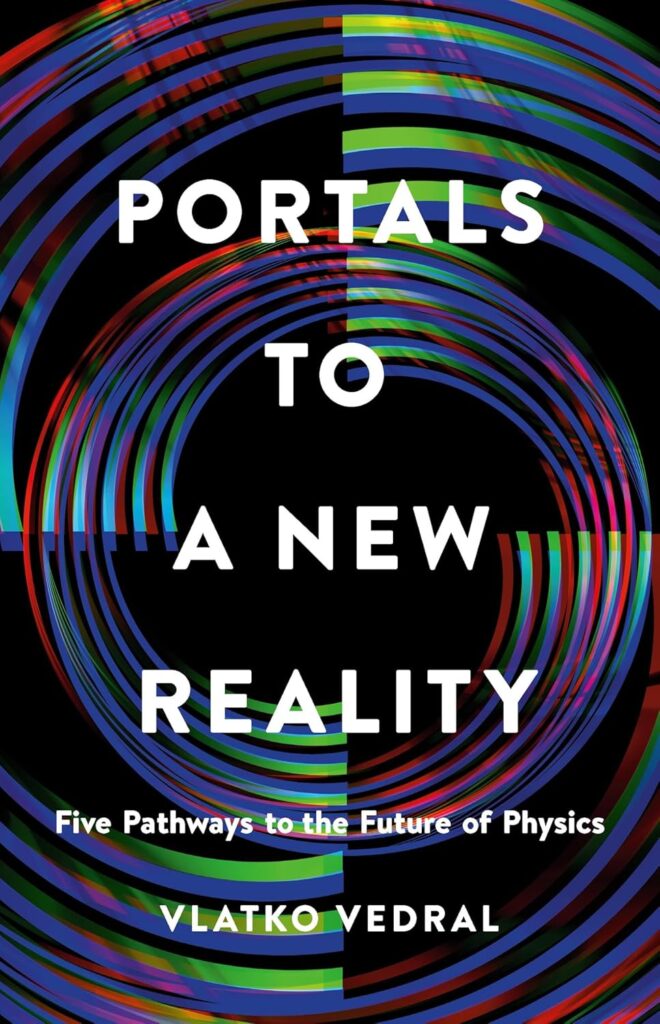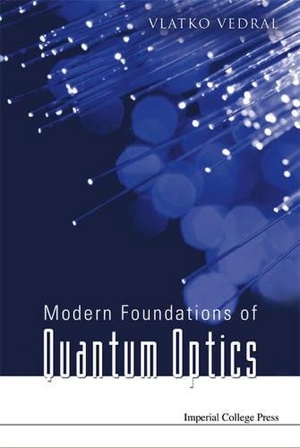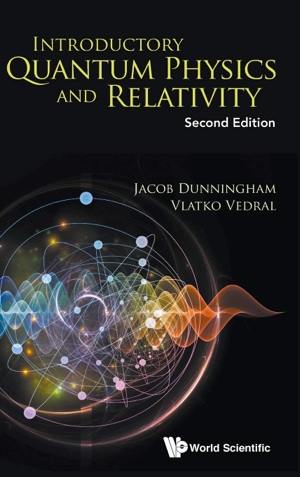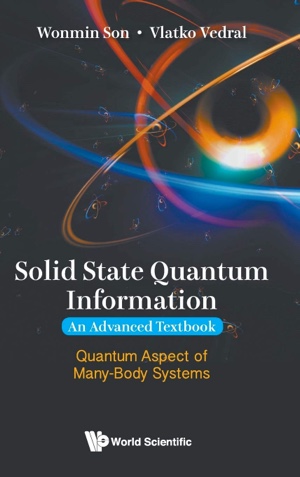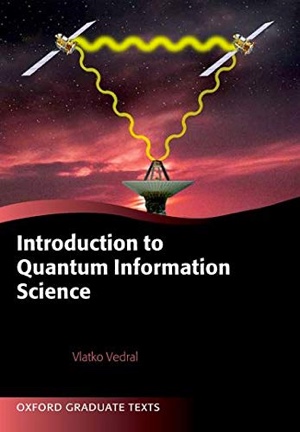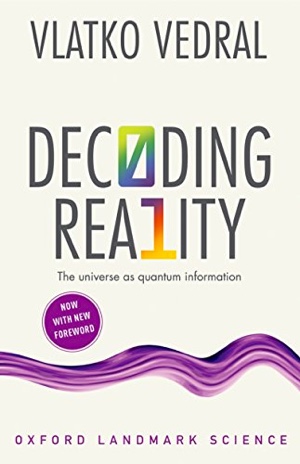It’s Quantum Physics All the Way Down
This is not an essay about the philosophy of infinite regress. No, none of my essays are ever about philosophy. As far as I am concerned, physics is the queen and philosophy just one of its many servants. I’d actually like to tell you about an interesting question in quantum physics that I believe deserve more attention.
Quantum interactions between different subsystems (such as an atom and the electromagnetic field) are always described through Hamiltonians. The Hamiltonian is a function of both the q(uantum) numbers pertaining to the interacting subsystems as well as some ordinary c(lassical) numbers. The quantum numbers are represented by operators which in general won’t commute (i.e. they cannot be specified to an arbitrary accuracy at the same time, such as the position and momentum of a particle). For instance, the atom-light Hamiltonian might contain the dipole operator of the atom multiplied by the electric field operator for light. But, in addition, there will be some c-numbers which also multiply these q-number. We have things like the electron charge, the speed of light, the vacuum permittivity and so on.
This situation may not seem satisfactory as we might like all the entities in our theory to be of the same kind. Shouldn’t the quantum Hamiltonian contain only quantum things? My colleague David Deutsch wrote a paper a while back – for Bryce de Witt’s sixtieth birthday collection – contemplating what it would mean to eradicate all c-numbers from quantum physics. For instance, when we say Ex we mean the x component of the electric field. In quantum physics E is an operator, however, x is still a classical number telling us that the field “points” in the x direction of space. But shouldn’t x also be a q-number? And what would that mean?
Another colleague of mine, Tomek Paterek, put the question somewhat differently. He said, if the interaction between an atom and the electromagnetic field contains other quantum numbers than the ones pertaining to the two systems (like the dipole and the electric field q-numbers), this ought to mean that there is a mediator in the shape of a third quantum system that actually “facilitates” the interaction between the atom and light. So when an excited atom de-excites and emits a photon (which we currently think of as a fundamental process with no simpler components), Tomek would say that there could be another quantum system which is engaged and which couples to the atom as well as the electromagnetic field. In other words, Quantum Electrodynamics would have to be modified since in addition to electrons and photons there would now be more quantum things that ought to be taken into account. Both David’s ideas as well as Tomek’s ideas can be tested (i.e. they are not just philosophy) as they would lead to novel effects that do not exist in the current model.
Which brings me to the title of my piece. There is a famous story involving Bertrand Russell (or one of those guys) in which he gave a public lecture explaining how the Earth revolves around the Sun and how the force of gravity keeps the whole universe in a state of balanced motion. At the end of the lecture, an old lady challenged him by stating that she thought the Earth was supported by a giant turtle instead. Russell, thinking that he got the better of her, asked: “But what does this turtle stand on, madam?” To which she simply replied: “It’s turtles all the way down!”.
Now, I’d like to outline a picture of the universe in which it’s quantum physics all the way down. I will take a different road to David and Tomek, but will effectively arrive at more or less the same conclusion.
When we upgrade the classical Hamilton-Jacobi equation to quantum physics, we obtain the Schrödinger equation. This upgrading procedure is known as the first quantisation in which some (but not all) c-numbers have now been converted to q numbers. The first quantisation forces some energies of the system to become discrete, and therefore different to their classical counterpart. However, these energies are still c numbers (such as the energy of the lowest electron orbital in the hydrogen atom).
Now, there is something called the “second quantization”. This takes the energies from the first quantisation and converts them into q numbers. This procedure involves introducing an extra complexity to each energy, namely particles which can possess that amount of energy. In other words, now we have one particle with a given energy, or two particles with that very same energy and so on, including any superposition of these particles. When the second quantisation is implemented we obtain quantum field theory, which is the most accurate description of all the known phenomena in physics (at the same time quantum field theory complies with Einstein’s theory of special relativity).
But why stop there? Why not “third quantize”? This question has been asked by many researchers, Yoichiro Nambu (Nobel Prize for spontaneous symmetry breaking) maybe being the earliest one, more than 70 years ago. What would be the physical meaning of third quantization? It would mean something like what Tomek has been suggesting. For instance, when we fix the frequency of light, in the second quantization we actually fix the energy of each photon at that frequency. But if we quantized this ones more, it would imply that photons are not the ultimate fundamental units of light, but that they consist of some underlying quanta, which Jim Franson (the latest in the line of third quantizers) called “oscillatons” (because photons are just excitations of the simple harmonic oscillator). So each photon could, in fact, be made up of superpositions of different numbers of oscillatons!
Clearly, the existence of oscillatons could in principle be tested, just like we can directly or indirectly test for the existence of photons. We do not even need to detect oscillatons directly – it would suffice to detect some deviation in the current laws of quantum electrodynamics that could be explained by the existence of oscillatons (photons too do not have to be detected directly; instead we can observe atomic oscillations which can only be explained if photons existed). Extrapolating, we could then imagine the fourth, fifth and so on quantisations, each leading to the existence of more and more particle, but never reaching the ultimate fundamental constituents. Perhaps less like an infinite tower of turtles, and more like an onion with infinitely many layers, such reality would always contain yet another deeper level for us to uncover.
Philosophers frequently object to the idea of infinite regress. This is because they believe it to be a bad way of explaining anything. The story of Russell and the old lady is meant to illustrate exactly that point. But nature does not care about philosophers. All things that we call paradoxical in our philosophy are simply mismatches between what we believe reality ought to be and what it actually really is.
It is certainly perfectly possible that the universe does not have the ultimate underlying building blocks out of which everything else is made. And maybe this is a good news for us physicists (and all other truth seekers) as we would then never run out of things to find out.

What is reality? (c) Chiara Marletto
Sign up to my substack
BOOKS
ASK ME ANYTHING!
If you'd like to ask me a question or discuss my research then please get in touch.
